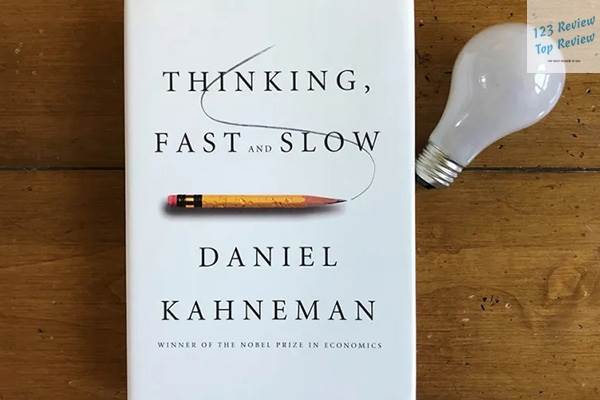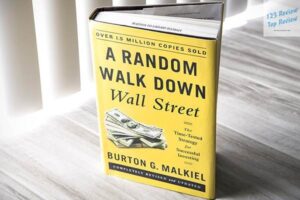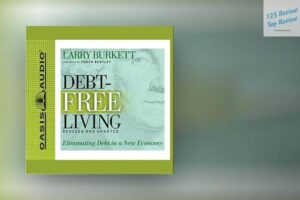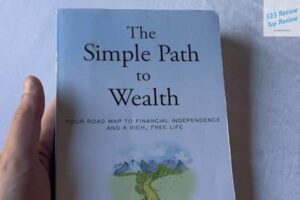Through decades of research, Kahneman, a Nobel laureate in Economic Sciences, dissects the complexities of how we think, make decisions, and often, make mistakes.
In this article, 123 Review offers an in-depth exploration of the book’s major themes, key concepts, psychological insights, and implications for both personal and professional life. It also addresses critiques of Kahneman’s work and examines related contributions from other scholars in the field of behavioral science.
Major Themes
Dual Systems of Thinking: System 1 and System 2
One of the most significant contributions of Thinking, Fast and Slow is the introduction of the dual-system theory of thinking. Kahneman categorizes our thought processes into two distinct systems: System 1 and System 2. System 1 operates automatically and quickly, with little or no effort and no sense of voluntary control. It is intuitive, making rapid judgments based on experience and immediate perception. This system is essential for everyday tasks, such as recognizing a friend’s face or driving on a familiar route. However, its speed and efficiency come at a cost—System 1 is prone to biases and errors.

System 2, in contrast, is slow, deliberate, and analytical. It requires effort and is typically engaged when we encounter complex problems or when System 1’s quick judgments are insufficient. System 2 is the part of our cognition that we associate with reasoning, self-control, and conscious decision-making. While more reliable, System 2 is also more resource-intensive, leading to mental fatigue when overused.
Kahneman’s exploration of these two systems sheds light on the interplay between intuition and reasoning in our daily lives. He illustrates how System 1 often governs most of our decisions without us even realizing it, while System 2 acts as a check, stepping in only when necessary. The dynamic between these two systems underpins much of the cognitive phenomena that Kahneman discusses throughout the book.
Cognitive Biases and Heuristics: The Invisible Hand of Judgment
Another core theme in Thinking, Fast and Slow is the examination of cognitive biases and heuristics. Heuristics are mental shortcuts that simplify decision-making processes. While these shortcuts are often useful, they can also lead to systematic errors—cognitive biases—that distort our perceptions and judgments. Kahneman identifies and explains a wide range of biases that affect our thinking. For example, the availability heuristic leads us to overestimate the likelihood of events that are more memorable or recent. Similarly, the representativeness heuristic causes us to misjudge probabilities by comparing situations to stereotypes rather than considering statistical realities.
These biases are not just academic curiosities; they have real-world implications. Kahneman illustrates how they influence everything from financial markets to personal relationships. By understanding these biases, Kahneman argues, we can better recognize the limitations of our intuition and make more informed decisions.
Decision-Making Processes: Navigating Uncertainty and Risk
Kahneman’s work offers a profound insight into how humans make decisions, particularly under conditions of uncertainty and risk. He challenges the traditional economic model of the rational agent, which assumes that individuals always make decisions that maximize their utility. Instead, Kahneman presents a more nuanced view, showing that our decisions are often influenced by factors that defy rationality.
One of the key insights is the concept of prospect theory, developed by Kahneman and his collaborator Amos Tversky. Prospect theory describes how people value potential gains and losses differently, leading to behaviors like risk aversion and loss aversion. According to this theory, the pain of losing is psychologically more powerful than the pleasure of gaining, which often leads individuals to make irrational decisions to avoid losses, even when the odds are in their favor.
Kahneman also explores the impact of framing on decision-making. The way a problem or decision is framed—whether in terms of potential gains or losses—can significantly influence the choices people make. This insight has profound implications for various fields, from marketing to public policy, where the framing of information can be a powerful tool for guiding behavior.
Emotional vs. Logical Reasoning: The Battle Within
One of the recurring themes in Thinking, Fast and Slow is the tension between emotional and logical reasoning. Kahneman delves into how our emotions can often override logical analysis, leading to decisions that may not be in our best interest. This conflict between emotion and logic is particularly evident in the operation of System 1 and System 2.
System 1 is heavily influenced by emotions, making it quick to respond but also susceptible to errors. For instance, in situations of fear or stress, System 1 might trigger a fight-or-flight response that is not always appropriate to the situation. On the other hand, System 2, which is more methodical and reasoned, can counterbalance these emotional impulses by taking a step back and analyzing the situation more objectively.
However, Kahneman also acknowledges that emotions are not inherently detrimental to decision-making. In many cases, they provide valuable shortcuts that help us navigate complex social environments. The key, according to Kahneman, is to be aware of when emotions are helpful and when they might lead us astray.
Key Concepts
System 1: The Fast, Intuitive Thinker
System 1 is the automatic, fast-thinking part of our brain that operates with little conscious effort. It is responsible for quick, instinctual decisions that we make without deliberate thought. For example, when asked a simple math question like “What is 2 + 2?”, System 1 provides the answer instantly without requiring any conscious effort.
Kahneman describes System 1 as being particularly good at recognizing patterns and making snap judgments based on experience. However, its reliance on intuition means it can be easily misled by biases and superficial cues. System 1 is also heavily influenced by emotions, which can further distort its judgments.
Despite its flaws, System 1 is essential for navigating daily life. It allows us to make quick decisions in situations where speed is more important than accuracy, such as avoiding a car in traffic or catching a falling object. The challenge, as Kahneman explains, is knowing when to rely on System 1 and when to engage the more deliberate System 2.
System 2: The Slow, Deliberate Analyzer
System 2 is the slower, more deliberate mode of thinking that takes over when we need to engage in complex reasoning or problem-solving. Unlike System 1, System 2 requires conscious effort and is associated with activities that demand concentration, such as solving a difficult math problem or planning a long-term project.
System 2 is also responsible for self-control and overriding the impulses of System 1. For example, when we are tempted to make an impulsive purchase, System 2 can step in to weigh the pros and cons and decide whether the purchase is truly necessary.
However, System 2’s deliberate nature also makes it more taxing on our mental resources. Prolonged engagement with System 2 can lead to mental fatigue, making us more likely to revert to the faster, easier System 1. Kahneman’s research highlights the importance of managing this balance between the two systems to make effective decisions.
Anchoring Effect: The Influence of Initial Information
The anchoring effect is a cognitive bias where individuals rely too heavily on the first piece of information they receive (the “anchor”) when making decisions. This anchor can significantly influence subsequent judgments and estimates, even if it is irrelevant or arbitrary.
Kahneman demonstrates how the anchoring effect operates in various contexts, from pricing to negotiations. For example, if you are negotiating the price of a car, the initial price offered can serve as an anchor, influencing your perception of what a fair price should be. Even if you know the anchor is too high or low, it still affects your final decision.
The anchoring effect reveals the power of initial impressions and the difficulty of adjusting our judgments once an anchor has been set. Kahneman suggests that being aware of this bias can help mitigate its impact, though completely overcoming it is challenging.
Availability Heuristic: The Ease of Recall
The availability heuristic is another cognitive shortcut that Kahneman explores in depth. It refers to our tendency to judge the likelihood of events based on how easily examples come to mind. If something can be recalled quickly, we are more likely to believe it is common or likely to happen.
This heuristic can lead to distorted perceptions of reality. For instance, after seeing news reports about airplane crashes, people might overestimate the risk of flying, even though statistically, it is one of the safest modes of transportation. The availability heuristic causes us to base our judgments on memorable or recent events rather than objective data.
Kahneman illustrates how the availability heuristic can lead to errors in various areas, including risk assessment, decision-making, and public policy. He emphasizes the importance of relying on statistical information rather than personal experiences or media reports to make more accurate judgments.
Loss Aversion: The Fear of Losing
Loss aversion is one of the most well-known concepts from Kahneman’s work, highlighting our strong preference for avoiding losses over acquiring equivalent gains. In other words, the pain of losing $100 is more intense than the pleasure of gaining $100.
This principle has significant implications for decision-making, particularly in areas like investing, gambling, and risk management. Kahneman’s research shows that loss aversion leads people to make conservative choices, often avoiding risks even when the potential rewards outweigh the losses.
Loss aversion is closely tied to prospect theory, which Kahneman developed with Amos Tversky. This theory suggests that people evaluate potential outcomes based on perceived gains and losses rather than final outcomes, leading to decisions that may not align with rational economic models.
Psychological Insights
Intuition and Dilemmas: The Role of Gut Feelings
Kahneman explores the role of intuition in decision-making, particularly when we face dilemmas or moral questions. Intuition, driven by System 1, often provides quick answers that feel right but may not hold up under scrutiny. Kahneman discusses how these gut feelings can be both a strength and a weakness in decision-making.
In some cases, intuition allows us to make effective decisions rapidly, especially in familiar situations where we can draw on past experiences. For example, a seasoned firefighter might instinctively know when a building is about to collapse, even if they cannot articulate why. This type of expert intuition is invaluable in high-stakes situations where there is no time for deliberation.
However, intuition can also lead us astray, particularly in complex or unfamiliar situations. Kahneman warns against over-relying on gut feelings in such scenarios, advocating for the use of System 2 to critically evaluate decisions and avoid common pitfalls.
Errors in Judgment: Common Cognitive Pitfalls
Thinking, Fast and Slow extensively covers the various errors in judgment that arise from our cognitive biases. Kahneman details how these errors are often the result of over-reliance on System 1 thinking, which, while efficient, is not always accurate. One such error is the planning fallacy, where people underestimate the time, costs, and risks of future actions while overestimating the benefits. This bias leads to overly optimistic projections and can result in delays, cost overruns, and failed projects. Another error is the illusion of control, where individuals believe they have more control over events than they actually do. This bias is particularly prevalent in areas like gambling, where people might believe they can influence the outcome of a random event, such as rolling dice.
Kahneman’s discussion of these errors highlights the importance of recognizing when we are prone to bias and taking steps to mitigate its effects. By understanding these common pitfalls, we can improve our judgment and make more rational decisions.
Role of Emotions in Decisions: The Double-Edged Sword
Emotions play a significant role in decision-making, often driving choices that are not entirely rational. Kahneman discusses how emotions can override logical reasoning, leading to decisions that prioritize short-term satisfaction over long-term benefits. For example, the fear of losing money can lead to overly conservative investment strategies, even when the data suggests a more aggressive approach would be beneficial.
However, emotions are not always detrimental. They can also serve as valuable signals, alerting us to important factors that we might otherwise overlook. For instance, feelings of unease can signal that something is wrong, prompting us to investigate further before making a decision.
Kahneman emphasizes the need to balance emotional and logical reasoning in decision-making. While it is important to be aware of how emotions influence our choices, dismissing them entirely can also lead to suboptimal decisions.
Overconfidence Bias: The Danger of Excessive Certainty
Overconfidence bias is the tendency to overestimate our knowledge, abilities, and the accuracy of our predictions. Kahneman explains how this bias can lead to excessive risk-taking and poor decision-making, particularly in professional and financial contexts.
For example, overconfidence can lead investors to believe they can predict market movements, leading to risky trades that might not be justified by the underlying data. Similarly, professionals might overestimate their ability to complete a project on time, leading to missed deadlines and cost overruns.
Kahneman’s work highlights the pervasiveness of overconfidence and its potential consequences. He suggests that by recognizing this bias, individuals and organizations can take steps to check their assumptions and make more balanced decisions.
Implications for Personal and Professional Life
Improving Decision Making: Practical Applications
One of the most significant takeaways from Thinking, Fast and Slow is its practical application in improving decision-making. Kahneman’s insights into how we think and make choices offer valuable tools for enhancing both personal and professional decisions.
In personal life, understanding the biases and heuristics that influence our decisions can help us make more rational choices. For example, being aware of the availability heuristic might prompt us to seek out objective data rather than relying on recent experiences or media reports when assessing risks.
In professional settings, these insights can be applied to improve strategic planning, risk management, and leadership. For instance, by recognizing the planning fallacy, project managers can build in contingencies to account for potential delays and cost overruns, leading to more realistic timelines and budgets.
Kahneman also emphasizes the importance of creating environments that support better decision-making. This includes encouraging critical thinking, providing access to relevant data, and fostering a culture where questioning assumptions is valued.
Applications in Behavioral Economics: Shaping Economic Theory
Kahneman’s work has had a profound impact on the field of behavioral economics, which integrates insights from psychology into economic theory. Traditional economics assumes that individuals are rational agents who make decisions to maximize their utility. However, Kahneman’s research shows that human behavior often deviates from this model due to cognitive biases and heuristics.
One of the key contributions of behavioral economics is the concept of nudging, popularized by Richard Thaler, another leading figure in the field. Nudging involves designing choices in a way that guides people toward better decisions without restricting their freedom. For example, automatically enrolling employees in retirement savings plans, with the option to opt out, has been shown to significantly increase participation rates.
Kahneman’s work also challenges the assumption of efficient markets, suggesting that psychological factors can lead to market anomalies, such as bubbles and crashes. By incorporating these insights, behavioral economics provides a more realistic understanding of how people make economic decisions.
Impacts on Policy Making: Designing Better Interventions
The principles outlined in Thinking, Fast and Slow have been applied to policy-making, particularly in areas like public health, education, and finance. By understanding how people think and make decisions, policymakers can design interventions that are more effective and aligned with human behavior.
For instance, policies that take into account loss aversion might be more successful in encouraging healthy behaviors. By framing incentives in terms of avoiding losses rather than gaining rewards, policymakers can tap into people’s natural aversion to losing, leading to higher participation rates.
Kahneman’s insights have also been applied to areas like tax compliance, where understanding the psychological factors that influence behavior can lead to more effective enforcement strategies. By designing policies that align with how people actually think and behave, rather than how they are expected to behave, governments can achieve better outcomes.
Influence on Marketing Strategies: Leveraging Human Psychology
Kahneman’s insights into consumer behavior have also influenced marketing strategies. Businesses use these principles to craft messages that resonate with System 1 thinking, creating campaigns that tap into emotions and biases to drive consumer decisions.
For example, marketers often use anchoring to influence perceptions of value. By presenting a high-priced item first, they can make subsequent items seem more affordable by comparison, even if the prices are objectively high. Similarly, loss aversion is used in promotional strategies, such as limited-time offers, to create a sense of urgency and fear of missing out.
Understanding the psychological factors that drive consumer behavior allows marketers to design more effective campaigns that resonate with their target audience. However, Kahneman also warns of the ethical considerations involved in using these techniques, emphasizing the need for responsible marketing practices that do not exploit consumers’ cognitive biases.
Critiques and Limitations
Reception within the Psychological Community: Praise and Criticism
Thinking, Fast and Slow has been widely praised for its groundbreaking insights into human cognition, but it has also faced criticism within the psychological community. Some researchers argue that Kahneman’s dual-system model oversimplifies the complexity of human thought. While the distinction between System 1 and System 2 is useful, it may not capture the full range of cognitive processes involved in decision-making.
Critics also point out that the dual-system model does not account for the interaction between different cognitive processes, such as memory, perception, and emotion. These processes are often intertwined, making it difficult to neatly categorize them into two distinct systems.
Despite these criticisms, Kahneman’s work remains highly influential, and the dual-system model continues to be a valuable framework for understanding human cognition. Ongoing research in psychology and neuroscience is likely to refine and expand on Kahneman’s insights, providing a more nuanced understanding of how we think and make decisions.
Methodological Concerns: Validity and Replicability
There are also methodological concerns regarding some of the studies cited in Thinking, Fast and Slow. Critics have pointed out that certain experiments, particularly those involving cognitive biases, may lack ecological validity, meaning they may not accurately reflect real-world scenarios.
For example, many of the experiments that demonstrate cognitive biases are conducted in controlled laboratory settings, where participants are asked to make decisions based on hypothetical scenarios. While these studies provide valuable insights into human cognition, the findings may not always generalize to real-world situations where decisions are influenced by a wider range of factors.
Additionally, the replicability of some of these studies has been called into question. The “replication crisis” in psychology has raised concerns about the reliability of research findings, including those related to cognitive biases. Kahneman himself has acknowledged these issues, calling for more rigorous research methods to ensure the validity of future studies.
Application to Real-World Scenarios: Challenges and Limitations
Applying the concepts from Thinking, Fast and Slow to real-world scenarios can be challenging. While the book provides valuable insights into human cognition, the complexity of human behavior means that these principles may not always translate neatly into practice.
For example, understanding cognitive biases is one thing, but mitigating their impact in real-time decision-making is another. Even when we are aware of our biases, it can be difficult to overcome them, especially in high-pressure situations where System 1 thinking dominates.
Moreover, the application of these concepts often requires a deep understanding of the specific context in which decisions are being made. What works in one scenario may not be effective in another, and interventions designed to improve decision-making must be carefully tailored to the unique circumstances of each situation.
Related Works and Authors
Influence of Amos Tversky: A Collaborative Legacy
Kahneman’s work on cognitive biases and decision-making is deeply intertwined with the contributions of Amos Tversky, his long-time collaborator. Together, they developed many of the concepts that are central to Thinking, Fast and Slow, including prospect theory and the study of cognitive heuristics.
Tversky’s influence is evident throughout Kahneman’s work, and their partnership is often regarded as one of the most successful collaborations in the history of psychology. Tversky’s sharp analytical mind complemented Kahneman’s deep curiosity about human behavior, leading to groundbreaking research that has shaped the field of behavioral economics.
While Tversky passed away before Thinking, Fast and Slow was published, his contributions are acknowledged throughout the book, and his legacy continues to influence research in psychology and economics.
Contributions from Behavioral Science: Expanding the Field
Kahneman’s work is part of a broader movement in behavioral science that seeks to understand how psychological factors influence economic and social behavior. Scholars like Richard Thaler, Cass Sunstein, and Dan Ariely have built on Kahneman’s insights to explore topics such as nudging, behavioral finance, and the psychology of decision-making.
Richard Thaler, in particular, has been instrumental in popularizing the concept of nudging, which applies insights from behavioral economics to public policy and personal finance. Thaler’s work has shown how small changes in the way choices are presented can have a significant impact on behavior, leading to better outcomes in areas like retirement savings, health care, and environmental conservation.
Cass Sunstein, a legal scholar, has also contributed to the field by exploring the implications of behavioral science for law and public policy. His work emphasizes the importance of designing policies that align with how people actually think and behave, rather than assuming they are always rational actors.
Further Reading Recommendations: Expanding Your Knowledge
For readers interested in delving deeper into the topics covered in Thinking, Fast and Slow, there are several related works that offer valuable insights. Richard Thaler’s Nudge: Improving Decisions About Health, Wealth, and Happiness is an excellent follow-up that explores how behavioral insights can be applied to improve decision-making in various domains. Dan Ariely’s Predictably Irrational provides a more accessible introduction to behavioral economics, with a focus on the hidden forces that shape our decisions. Ariely’s engaging writing style and real-world examples make complex concepts easy to understand. Another recommended read is Misbehaving by Richard Thaler, which chronicles the development of behavioral economics and provides a behind-the-scenes look at the field’s evolution. Thaler’s work offers a fascinating glimpse into the challenges and triumphs of bringing psychology into the realm of economics.
Conclusion
Lasting Influence of Kahneman’s Work: A Legacy of Insight
Thinking, Fast and Slow has left an indelible mark on the fields of psychology, economics, and beyond. Kahneman’s exploration of the dual systems of thinking, cognitive biases, and decision-making processes has fundamentally changed the way we understand human behavior. His work has not only advanced academic research but also influenced practical applications in areas as diverse as public policy, marketing, and finance. The concepts introduced in the book, such as System 1 and System 2, loss aversion, and the availability heuristic, have become part of the common lexicon, used by professionals and laypeople alike to describe everyday experiences. Kahneman’s ability to distill complex ideas into accessible language has made Thinking, Fast and Slow a must-read for anyone interested in understanding how we think and make decisions.
Future Directions in Research: Continuing the Exploration
While Thinking, Fast and Slow has provided a solid foundation for understanding human cognition, the field of behavioral science continues to evolve. Ongoing research in psychology, neuroscience, and economics is likely to build on Kahneman’s insights, exploring new dimensions of decision-making and uncovering additional factors that influence our choices.
One area of interest is the integration of findings from neuroscience with behavioral science. Advances in brain imaging and neurotechnology offer the potential to deepen our understanding of how the brain processes information and makes decisions. This research could lead to new interventions and strategies for improving decision-making in both personal and professional contexts.
Another promising direction is the application of behavioral insights to global challenges, such as climate change, public health, and social inequality. By understanding how people think and behave, policymakers and organizations can design more effective interventions to address these pressing issues.
In conclusion, Thinking, Fast and Slow is not just a book; it is a gateway to a deeper understanding of the human mind. Kahneman’s work continues to inspire researchers, practitioners, and readers worldwide, offering valuable lessons that resonate across disciplines and everyday life. As we continue to explore the complexities of human cognition, Kahneman’s insights will undoubtedly remain a guiding light for years to come.





